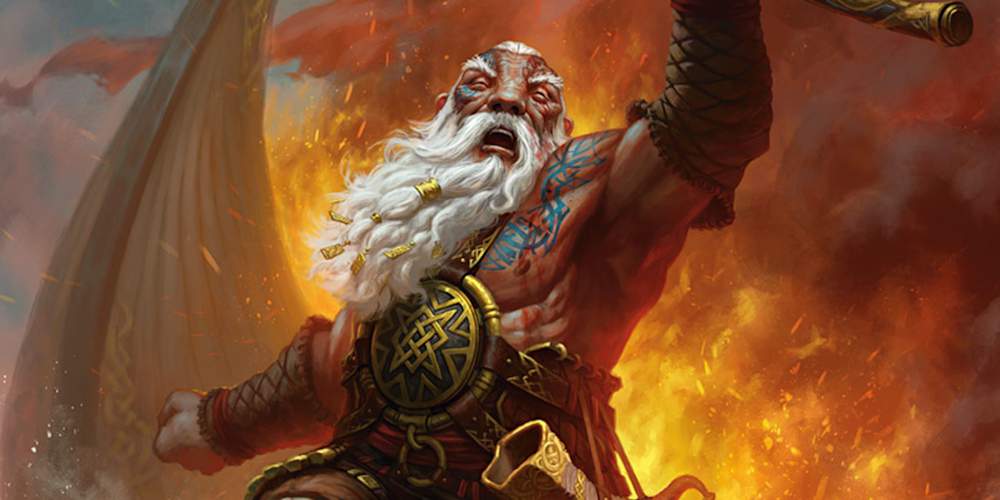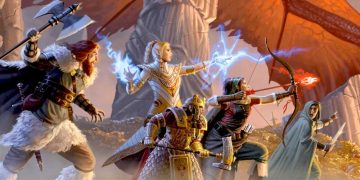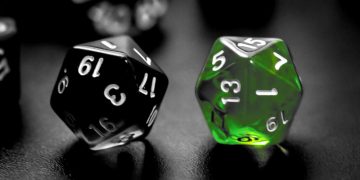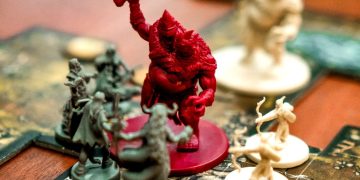When you're looking at melee classes in Dungeons & Dragons, don't overlook the humble Fighter like many people do.
Sure, Fighters don't have access to spells like Paladins and Rangers, and they might not have the huge damage numbers of Barbarians and Rogues. It's true, Fighters often felt overshadowed by other classes in previous versions—but they're pretty great in D&D 5e.
With much-needed buffs to both versatility and damage output, Fighters are a solid choice for anyone looking for a well-rounded melee character.
Here are some key tips for being a Fighter and how you can help lead your adventuring party to success.
This article is part of a series of D&D class guides for beginners. If you're interested in other classes, check them out as well:
- D&D 5e Barbarian Guide for Beginners
- D&D 5e Bard Guide for Beginners
- D&D 5e Cleric Guide for Beginners
- D&D 5e Druid Guide for Beginners
- D&D 5e Fighter Guide for Beginners
- D&D 5e Monk Guide for Beginners
- D&D 5e Paladin Guide for Beginners
- D&D 5e Ranger Guide for Beginners
- D&D 5e Rogue Guide for Beginners
- D&D 5e Sorcerer Guide for Beginners
- D&D 5e Warlock Guide for Beginners
- D&D 5e Wizard Guide for Beginners
Tip 1: Don't Be Afraid to Second Wind
Fighters don't have a way to heal the party and lack many options for supporting others, so the best thing you can do is keep yourself alive and fighting. Fortunately, with Second Wind, you can do just that.
Second Wind heals yourself for 1d10 + your Fighter level and it's available right from the start, allowing you to stay on your feet even if nobody can help you. Plus, it only costs 1 Bonus Action to use!
This is especially useful at lower levels when the dedicated healers of your party have limited spell slots. By keeping yourself alive, those heal spells can be used on other party members, so you're indirectly supporting them.
The best thing is that Second Wind resets with both short rests and long rests, so you can use it multiple times a day. Don't worry about wasting it; indeed, use it as often as you need it.
Tip 2: Pick Your Fighting Style Carefully
At 1st level, you will need to pick your Fighting Style. This decision isn't quite as important as your Martial Archetype later on, but it gives you the chance to specialize in an area.
Fighting Style represents a combat specialty, whether that's archery, two-weapon fighting, protective support, etc. It doesn't completely define your character, but it does offer a small boost that adds up over time.
If you aren't sure how you're going to build your Fighter long-term, you can always default to the Defense Fighting Style. This one gives you +1 to AC when wearing armor, and that will always be useful no matter how your character ends up evolving down the road.
Other Fighting Styles may bestow more powerful bonuses, but they are also more narrow in terms of what you can wield, how you need to approach fights, etc. Defense is the most versatile option.
Note that the Rules as Written don't allow you to change your Fighting Style later on, but you can always ask your DM if it isn't working out how you envisioned. Most will be fine with making a simple swap.
Tip 3: Action Surge Is Your Best Friend
Starting at 2nd level, Fighters gain one of the most powerful features in the entire game: Action Surge.
Action Surge allows you to take an additional Action during your turn, whether that's attacking again, helping a friend, downing a potion, etc. It becomes exponentially more powerful at higher levels when each Attack action allows you to attack more than once.
Like Second Wind, Action Surge resets with every short rest and long rest, so you can use it multiple times a day. Don't be afraid to use it often because it's one of the best ways to pump out damage.
Tip 4: Your Martial Archetype Defines You
As with most classes in D&D 5e, 3rd level is when Fighters unlock their most interesting powers—namely Martial Archetypes, which bestow new and powerful abilities that allow you to specialize even further.
The Core Rulebook lays out three possible Martial Archetypes, but subsequent releases have introduced more. Since this article is for newbies to the class, we recommend the ones in the Core Rulebook.
If you want to play a simple Fighter who fights in a straightforward way that doesn't involve tracking extra resources, pick the Champion. Not only does this increase your Critical Hit range at 3rd level and again at 15th level, but it also allows you to take a second Fighting Style at 10th level.
Battle Master is for players who want to supplement their melee attacks with additional tricks up their sleeves. This Martial Archetype unlocks maneuvers that you can use to increase attack rolls, force enemies to focus their attention on you, or even knock them to the ground.
These maneuvers are fueled by Superiority Dice, which are expended each time you use them. However, they're reset with every short rest and long rest, so they remain plentiful even at lower levels.
The final Martial Archetype in the Core Rulebook is Eldritch Knight, which allows Fighters to learn a small number of spells.
These spells are somewhat limited, but they add a very different flavor to the Fighter and provide extra versatility that can prove helpful. Eldritch Knights also get a bonded weapon that they can summon to their hand with a Bonus Action, meaning they can't be disarmed.
Tip 5: Gear Management Is Crucial
The biggest weakness of the Fighter is its lack of combat versatility. Though some Martial Archetypes unlock arcane damage abilities, most Fighters are stuck dealing physical damage most of the time.
This can be a problem starting at around 5th level because that's usually when the DM starts incorporating enemies with damage resistance.
Magical weapons can allow you to bypass many forms of damage resistance, but you might find magical weapons are rare and hard to come by. In that case, you'll need to carry multiple weapons that can inflict different types of damage and swap them out as needed.
The three main types of physical damage are bludgeoning, slashing, and piercing. Once you can afford to, make sure you're always carrying a weapon of each type. (You should have enough money to purchase multiple weapons by mid-level play.)
Fortunately, Fighters can use almost any weapon in the Core Rulebook without penalty, so there are plenty of options available!





